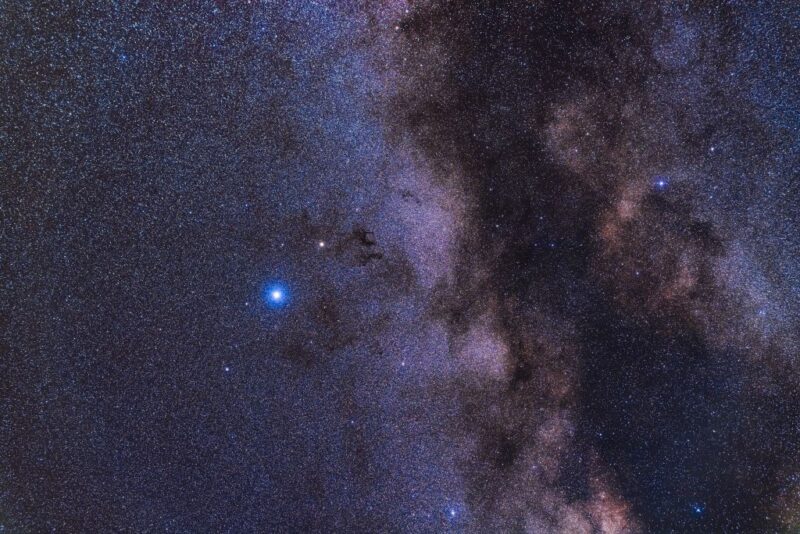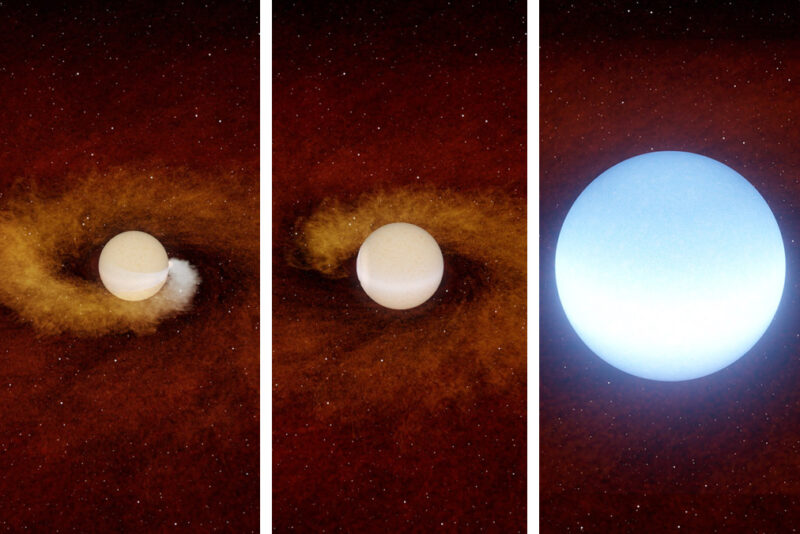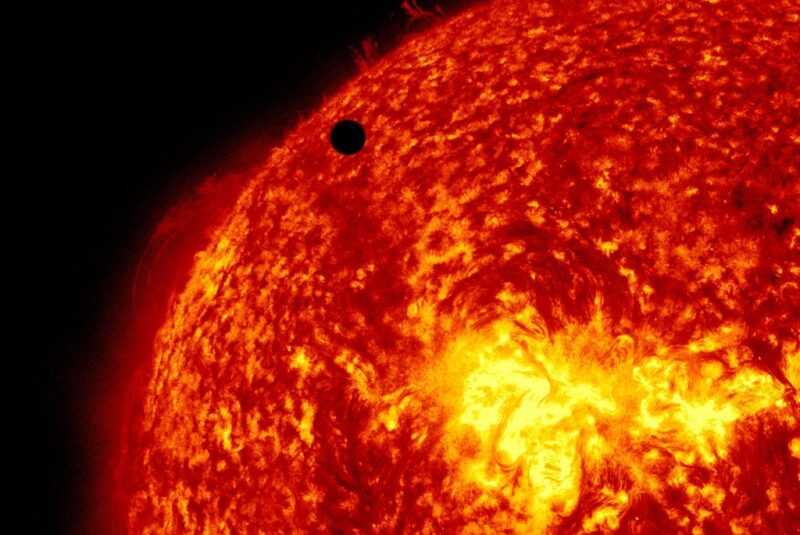For the First Time, Astronomers Have Observed A Star Eating Up A Planet
For the first time ever, scientists and astronomers have captured footage of a star swallowing an entire planet. Writing in a study published to the journal Nature, the team, led by Kishalay De of the Massachusetts Institute of Technology, reveals that this very fate awaits the Earth.

According to the study, An infrared transient from a star engulfing a planet, the event was first noticed by De in May 2020 while he and his team were reviewing sky scans taken by the Palomar Observatory at the California Institute of Technology. For a year after, they did additional research to piece together an explanation as to what they’d witnessed.
The planet engulfment, as it’s known, occurred between 12,000 light-years from Earth, near the Aquila constellation. The star in question is believed to be around 10 billion years old. As they age and burn the remainder of their hydrogen fuel, these luminous spheres can grow as much as one million times their original size, eating up nearby planets and objects.
As the star expanded, it absorbed a nearby gas giant, which is said to have been around the size, if not bigger, than Jupiter. While astronomers have previously observed celestial bodies taking “nibbles” out of planets, this was the first time one was observed being completely consumed.
As the star swallowed the planet, the team noted a burst of light, followed by a stream of dust that appeared as cold infrared energy. This lasted for around a year after the star’s brightness diminished. After this, the bright sphere faded away. “We were seeing the end-stage of the swallowing,” De said in a press release.
“For decades, we’ve been able to see the before and after,” De shared. “Before, when the planets are still orbiting very close to their star, and after, when a planet has already been engulfed, and the star is giant. What we were missing was catching the star in the act, where you have a planet undergoing this fate in real-time. That’s what makes this discovery really exciting.”

According to De and his co-authors on the study, this serves as a preview of what Earth can expect once the sun turns into a red giant and swallows up its four inner planets, among them Venus and Mercury.
“We are seeing the future of the Earth,” he explaind in the media release. “If some other civilization was observing us from 10,000 light-years away while the sun was engulfing the Earth, they would see the sun suddenly brighten as it ejects some material, then form dust around it, before settling back to what it was.”
Thankfully, that’s not expected to occur for another five billion years.

More from us: Woman Who Went Missing In Australian Bushland Survived 5 Days On Wine, Lollipops
The research that made the study possible was supported by NASA, the Heising-Simons Foundation and the US National Science Foundation.





